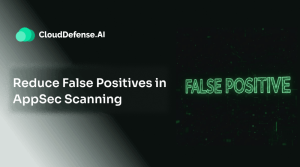
On June 29, 2024, a devastating ransomware attack plunged Patelco Credit Union, a major financial institution in Northern California, into a state of turmoil, leaving over 450,000 members grappling with unprecedented disruption to their banking services.
How did the Breach Unfold?
In a stark and urgent message delivered on July 1, CEO Erin Mendez laid bare the grim reality faced by the credit union in the aftermath of the June 29 cyber assault. “The next few days and coming weeks may present challenges for our members, as we continue to navigate around the limited functionality we are experiencing due to this incident,” Mendez warned, highlighting the severity of the situation.
With online banking crippled and numerous services rendered inoperative, Patelco has been forced to take extraordinary measures, including the shutdown of critical banking systems. As the credit union, boasting $9 billion in assets and 37 branches, races against time to restore normalcy, the true impact of this cyber onslaught is only beginning to unfold, casting a shadow of uncertainty and distress over its extensive member base.
Customer Assets Frozen
The fallout from Patelco Credit Union’s ransomware attack is proving catastrophic for its members, who are now paying the price for the institution’s apparent lack of robust security measures. Enrique Juarez, a retired warehouse worker and one of Patelco’s estimated 500,000 members, is among the countless individuals caught in the crossfire. Juarez, who relies solely on his social security check, visited the Story Road branch in San Jose after discovering his check had bounced.
Juarez was advised by a banker to contact the federal agency responsible for his social security payments, as Patelco’s systems remain paralyzed. “I’ve never had a problem before,” Juarez lamented. “Everything’s frozen, I can’t even check my balance until this is resolved – and they don’t know when that will happen.”
How Did the Attack Take Place?
In a chilling revelation that brings out the glaring vulnerabilities, Ahmed Banafa, a cybersecurity expert and lecturer at San Jose State University, shed light on the likely method of attack that crippled Patelco Credit Union.
Banafa suggested that hackers infiltrated the credit union’s internal databases through a malicious “phishing email,” an all-too-common yet devastatingly effective tactic. Once inside, the cybercriminals encrypted the sensitive contents of Patelco’s databases, effectively locking the credit union out of its own systems.
This breach has exposed a concerning lapse in Patelco’s cybersecurity defenses, raising serious questions about the institution’s commitment to protecting the personal and financial data of its 450,000 members. Despite being a major financial entity the credit union appears to have fallen prey to an exploit that could have been taken care of with proper security measures and vigilant protocols.
Banafa explained the situation further, noting, “The hackers, what they do usually, they ask for cryptocurrency, they ask for payment. That’s why it’s called ransomware.” This incident highlights not only the immediate havoc wreaked by the attack but also the troubling ease with which the perpetrators infiltrated Patelco’s systems, casting a shadow over the institution’s security practices and the trust placed in it by its extensive member base.
Customer Data was Affected
Personal information of bank customers and potentially money directly from the credit union has likely been compromised. Ahmed explained that hackers can take this sensitive information and sell it on the dark web, where it can be used for a variety of illegal activities.
This breach has exposed members to significant risks, including identity theft and financial fraud, leaving them vulnerable to long-term consequences. The attack’s impact on personal data security is deeply concerning, further worsening the distress and uncertainty already faced by Patelco’s members.
Could the Ransomware Attack be Avoided?
Patelco Credit Union’s attack has left its members reeling, raising a haunting question: Could this have been avoided? The answer lies in the fact that Patelco seemingly failed to implement cybersecurity measures. Traditional defenses are no longer sufficient to fend off cybercriminals, and Patelco failed to understand that. This attack serves as a grim reminder that without cutting-edge protection, financial institutions are sitting ducks for hackers.
Financial institutions like Patelco should have implemented multi-layered security protocols to avoid becoming victims of ransomware. These protocols include regular cybersecurity assessments, employee training on recognizing phishing attempts, and strict access controls to protect sensitive data.
Advanced threat detection and response solutions, such as the one provided by CloudDefense.AI, could have potentially thwarted such an attack. These solutions use cutting-edge AI and ML-driven technology to swiftly detect and neutralize cyber threats, offering real-time monitoring and proactive threat reduction. Their unified threat visibility, rapid investigation capabilities, and risk-based prioritization ensure that companies can stay ahead of attackers.
Final Words
June 29’s attack on Patelco Credit Union has again amplified the importance of proper cybersecurity measures. The disruption has left members vulnerable and shaken trust in the institution.
Patelco’s experience should serve as a wake-up call for all financial entities to invest in advanced security measures, ensuring better protection against cyber threats and protecting customer data.
Adopting cutting-edge technologies, such as CloudDefense.AI’s Hacker’s View™, DSPM, and other effective tools, could help put the last nail in the coffin of malicious hackers. If you are still relying on outdated traditional security, then it’s high-time for you to upgrade. Get in touch with us now.







